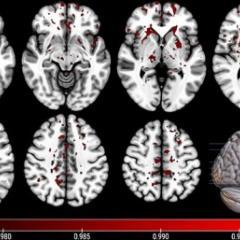Researchers from The University of Queensland have found that a commonly used psychological distress screener developed for adults is valid for use in adolescents although they have much higher distress scores.
Child and Youth Psychiatrist Professor James Scott from UQ’s Child Health Research Centre explained that for adults using The Kessler Psychological Distress Scale (K10), the scores generated for the levels of psychological distress are well understood. However Australian adolescents tended to score higher and the high scores are not as indicative of mental illness compared to adults.
“The lives of adolescents are much less predictable, and they have additional pressures such as problems with their peers, academic concerns and puberty,” Professor Scott said.
“Out of the adolescents identified by the K10 screener as ‘likely to have a severe mental disorder’, less than 50 per cent actually had major depressive disorder (MDD) when assessed with a standardised diagnostic instrument.
“Concerningly, adolescent females aged 15-17 years had the highest levels of distress, but we need more research to understand why and provide better support.”
The K10 screener is freely available online and is commonly used by GPs, parents and young people to screen for mental disorders, but there was no representative data of Australian adolescents until now.
Professor Scott said these results required careful clinical judgment.
“Severe mental disorder is a term generally used for illnesses such as schizophrenia and severe bipolar disorder.
“The concern is that terminology associated with high levels of distress such as “likely to be experiencing a moderate or severe disorder” could result in over-pathologizing the distress that is experienced by many young people.
“For some of these adolescents, rather than referral to a mental health professional, addressing the underlying stressor in combination with lifestyle changes to diet, physical activity, sleep and social connection may reduce the distress.
“While screening tools like the K10 are good for identifying those experiencing mental distress, they should not be used as a stand-alone measure for the diagnosis of major depressive disorder (MDD) or any other mental disorder in adolescents.
“There also needs to be an increased emphasis on public health interventions, particularly parent and family support for distressed adolescents.
“Then, for those where distress persists, seeing a mental health professional may be helpful.”
This research used data from the Department of Health’s Young Minds Matter study.
This study is published in The Australian & New Zealand Journal of Psychiatry.
Media: UQ Faculty of Medicine, med.media@uq.edu.au , +61 436 368 746.



